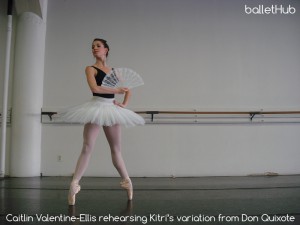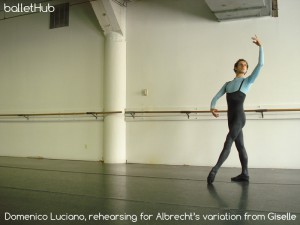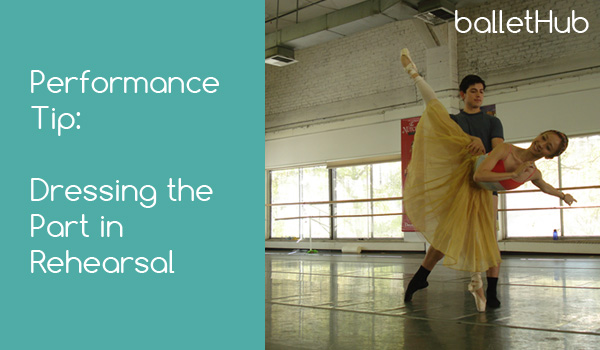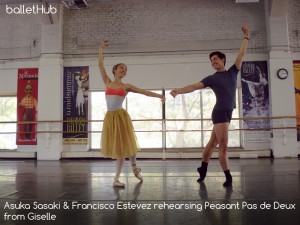Dancers can get nervous on stage. No matter how many times or years you’ve been performing, you may find yourself with butterflies right before the curtain comes up, or maybe even hours before!
Often times, a dancer may get even more nervous than usual if he or she feels unprepared. This unprepared feeling can stem from many things, from not feeling right about your hair and makeup, thinking of how some rehearsals haven’t gone smoothly, or even the costume you’re wearing. Read on for an easy-to-do tip anyone can use to help better prepare for a performance.
Last Minute Technique Worries
Feeling unprepared isn’t a great feeling right before you head out on stage. But what are you feeling unprepared for? Every dancer, should at least, wants to do their very best every time they perform. Part of doing “your very best” is making sure you bring corrections from rehearsals to your performance, feeling focused and ready for anything, and of course, bringing your technique to the stage!
In my opinion, it’s very important to wear rehearsal clothes that are close to what you will wear on stage. – Francisco Estevez
Imagine this, you’re a dancer who loves to cover up in warmups all day for rehearsal. Suddenly now, moments before you go on stage, you realize you’re standing there in your costume, nothing but a leotard and tights. Or possibly white tights and a bare chest for men? Now you begin to think, “Now I really have to think of pointing my feet and stretching my legs! I better pull up more now! What about my port de bras? Is my arm bending funny? I didn’t notice that before…” And then the curtain rises. You go out and perform and rather than thinking of performing you’re suddenly thinking of Ballet 101: Straight legs and pointed feet.
How can you keep from having those kind of nervous thoughts? Simply knowing and feeling confident that you’ve done all you can prior to the show in every rehearsal, not the day of performance.
Dress the Part in Rehearsal
This is a very good tip that students and professionals should consider and put to good use. One of the best ways to keep away from some nervous thoughts moments before you go on stage is preparing from the start, in your rehearsals.
Here’s the simple idea: If you’re going to be dancing in full tights, its a good idea to wear full tights. If you’re going to be dancing in a tutu, its a good idea to wear a tutu. And so on. This way, you’re able to get a real look at yourself in something that is mimicking the costume you’ll be wearing on stage, and more importantly, your teacher, choreographer or director will too.
I end up performing with more confidence because I feel secure with the technique I’ve been rehearsing and there’s less surprises on stage. – Caitlin Valentine-Ellis
Sometimes all it takes is one day of not wearing a warmup to realize that after several weeks of rehearsing, your leg was always bent in an arabesque or you weren’t fully stretching your foot for a jump. Warmups allow the dancer to get away with a lot of mistakes and every dancer knows that improving your technique doesn’t happen unless you’re pro-active. If you’re always “getting away” with it, you’re not giving yourself the opportunity to improve to your full potential.
A Few Examples
Here we have dancers Francisco Estevez and Asuka Sasaki. They’re rehearsing and getting ready to perform the Peasant Pas de Deux in Giselle. Asuka is wearing a leotard to make sure Francisco can hold her waist properly and she can see the lines of her upper body, no leg warmers so she can see the full line of her feet and a rehearsal skirt that is similar to the costume she’ll be wearing on stage. Francisco is wearing a fitted shirt to help see the line of his upper body and no warmup pants so he can see the lines of his hips, legs and feet.
Francisco says, “In my opinion, it’s very important to wear rehearsal clothes that are close to what you will wear on stage. Of course if you are more experienced or have danced the role many times, you may at first allow yourself to wear warm ups; but even if you are a seasoned professional you will want to wear appropriate attire closer to the performance. By doing so you are able to see and work on things that you may have not seen when you were otherwise covered up. It also helps you get comfortable dancing in a similar costume to what you will be wearing on stage. This practice will be invaluable if you are dancing with a partner. Your costume will affect how your partner dances with you and visa verse, and practicing with the appropriate attire will avoid any surprises on stage. And bear in mind this applies to class as well. If you want to improve, don’t cover up.”
 Caitlin Valentine-Ellis is seen here rehearsing Kitri’s variation for the Don Quixote Pas de Deux. Since she’ll be wearing a tutu on stage, she’s decided to wear a tutu during rehearsal along with full pink tights so, again, she can see fully see the lines her legs and feet are making.
Caitlin Valentine-Ellis is seen here rehearsing Kitri’s variation for the Don Quixote Pas de Deux. Since she’ll be wearing a tutu on stage, she’s decided to wear a tutu during rehearsal along with full pink tights so, again, she can see fully see the lines her legs and feet are making.
“I like to rehearse in something similar to the costume I’ll be performing in. I end up performing with more confidence because I feel secure with the technique I’ve been rehearsing and there’s less surprises on stage.” says Caitlin.
 Here Domenico Luciano is rehearsing Albrecht’s second act variation in full tights and a tight fitting shirt to ensure his rehearsal time is spent sculpting his lines properly.
Here Domenico Luciano is rehearsing Albrecht’s second act variation in full tights and a tight fitting shirt to ensure his rehearsal time is spent sculpting his lines properly.
Domenico says, “I don’t like to wear warm ups during class or rehearsals because I like to work on specific details on my body. I want to always make sure I can deliver the best angle and line. I’m also always conscious about sculpting my body in the correct way, in this case for Giselle in a pure, academic, and classical way.”
Technique Aside, It’s a Different Feeling
Put the worries of technique aside. If you’re a dancer, you likely own a set of warmups. How do your muscles feel when you’re wearing the warmups? How do they feel with them off? How do your toes feel when they’re wrapped in full tights as opposed to bare inside your shoe? What about your ankles?
Have you ever put a tutu on and thought “Wow, this feels so weird to turn in!” These sorts of thoughts and feeling of unfamiliarity can creep in and cause doubt during a time when confidence is a major key to success and doing your best.
A Simple Way to Improve Your Technique
I don’t like to wear warm ups during class or rehearsals because I like to work on specific details on my body. I want to always make sure I can deliver the best angle and line. – Domenico Luciano
It’s difficult to individually overcome sometimes, but some dancers are very self conscious and like to cover up their bodies with warmups, especially parts they like the least or need to work on. But have you ever heard of anyone giving the advice, “To improve your technique, simply put on some warmups and your problem areas will fix themselves!” It just doesn’t work that way with ballet technique.
If you feel you need to improve the line of your feet, you owe it to yourself to not wear legwarmers around your ankles so you can see and concentrate on making them better. That can be applied to anything you feel you need to improve on. Of course, this advice extends into class as well, a time dancers often see as an opportunity to improve. But try not think of class as the only time to improve. You can try to improve your technique in every rehearsal.
Since you’re already putting in the rehearsal time, the next question to ask yourself is, “Do I want to get the most of it?”


